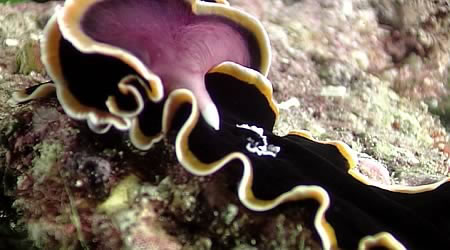Penis Fencing in Flatworms
Biology 342 Fall 2010
Amelia Munson and Megana Sankaran
Ontogeny

| Ontogeny describes how a behavior develops with age and how environmental factors play a role in the development of said behavior. Extensive research has not been performed to study the development of penis fencing in marine flatworms. There are many questions still to be answered. Such as, when do marine flatworms reach sexual maturity? How does it learn this behavior? Does the environment affect the behavior? How does penis fencing change over an individual's life time? Many of these questions are hard to even speculate about because age or development is often not a considerarion in experiments. Often times only location of the flatworm is recorded and not their age. In research performed by Rawlinson et al., reproduction, development, and parental care were studied in flatworm species Pleioplana atomata and Imogine Zebra. They showed that developmental times of flatworms (and invertebrates in general) correlate with the temperature that the organism dwells in. The two organisms the research primarily dealt with, Pleioplana atomata and Imogine Zebra, live mostly along the northeastern seaboard of the United States, where lower temperatures predominate for most of the year. The researchers found that the time from oviposition to hatching for Pleioplana atomata and Imogine Zebra were three and six weeks respectively. However, the research noted that tropical and subtropical polyclads experience rapid development of only a couple of days (Rawlinson et al. 2008P. bifurcus is a flatworm that performs penis fencing and lives in tropical climates. Persumably this species would reach sexual maturity sooner. This may enable them to gain valuable experience to become better "fencers" but further experimentation would be needed to explore this area. In an experiment performed by Kolasa et al, hermaphroditic flatworms of the genus Turbellaria were evaluated as potential agents for biological control of mosquito larvae. All Turbellaria experience penis fencing upon sexual maturation, which was achieved in the individuals used for the experiment when the organisms were about five millimeters long (Kolasa et al. 1984). This may suggest that sexual maturity in Turbellaria flatworms is more dependent on size then temperature alone. This could play a role in the development of penis fencing as larger individuals may be at an advantage in during fencing. Flatworms may only develop sexuallly when they are large enough to fence. Again further experimentation would be needed to subsantiate these hypotheses. |